How to Relieve Neck Pain: Avoid These 4 Common Mistakes
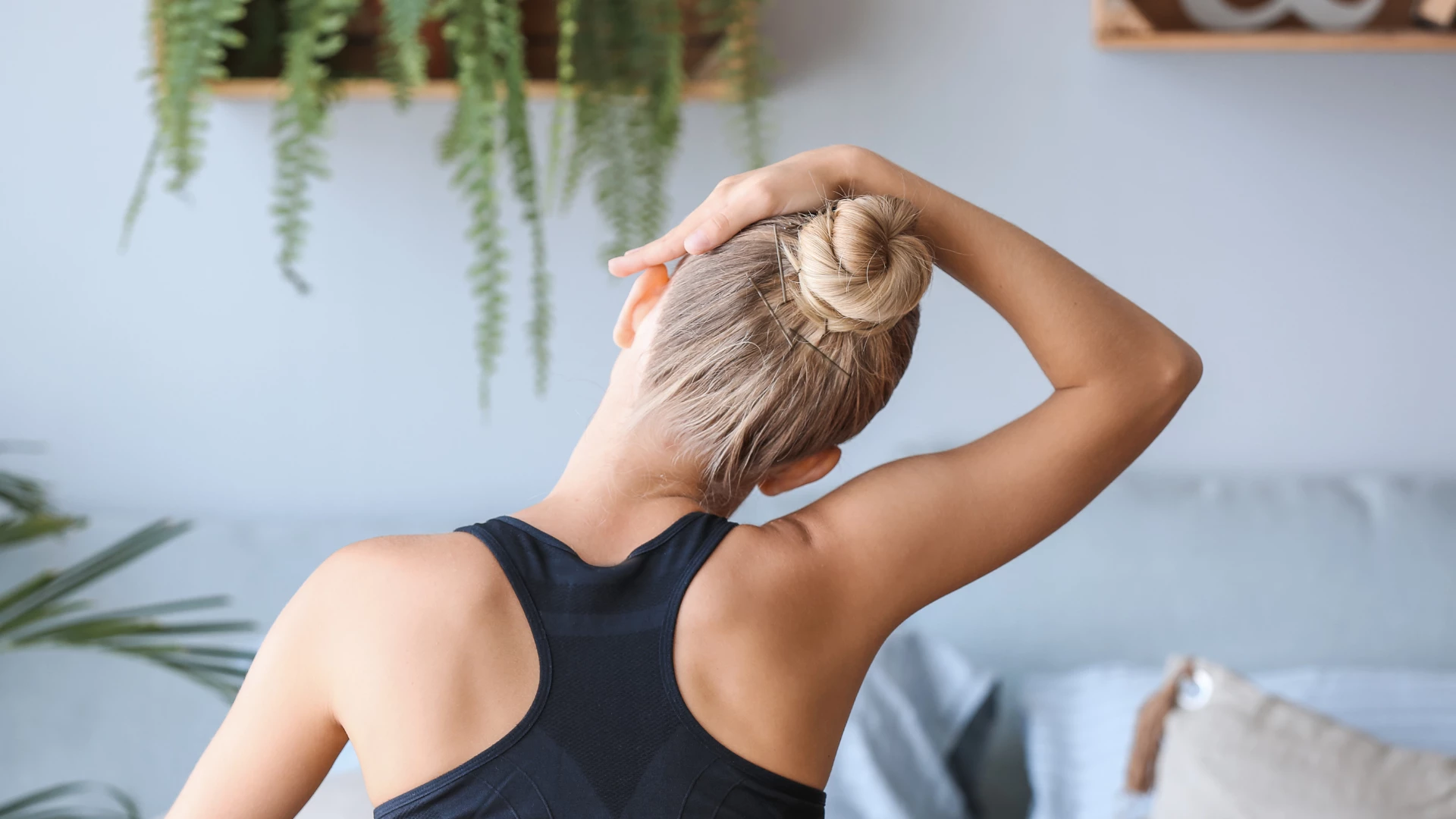
Article At A Glance
Struggle with neck pain? You are not alone. About one in three people will suffer from neck pain at least once a year. But did you know that neck pain is often caused by faulty movement habits? Here are 4 common mistakes to avoid.
Struggle with neck pain? You are not alone. About one in three people will suffer from neck pain at least once a year. Not only is it more common in women than in men, but the chances of developing neck issues increase with age.
Neck pain is often caused by faulty movement habits. Here are 4 common mistakes to avoid.
Why Neck Health Is So vital for Well-Being and Movement efficiency
Balancing, supporting, and then stabilizing the head are real responsibilities of the neck. But the reality is that, unlike other body muscles, most people ignore, much less train, the neck muscles. We only seem to care about the neck when we have pain or injury. After all, neck training doesn’t make you jump higher or run faster. So why take time to strengthen that area?
We’re glad you asked because neck health is unquestionably vital for movement efficiency. Your neck is the start of your spinal column and spinal cord, and it plays a crucial role in your overall wellness and ability to perform everyday tasks and live an active life. Functionally strong neck muscles will enable you to continue participating in fitness activities as long and often as you wish.
We are creatures of habit, and our necks have to constantly adjust the posture of our heads throughout the day. This requires great muscle endurance, and, well, if you’re not maintaining healthy posture habits, weakened muscles could eventually give rise to the proverbial pain in the neck.
Do you have any of the following symptoms?
- Difficulty turning the neck in certain directions
- Headaches
- Muscle spasms, stiffness, or pain in neck and shoulders
- Weakness in the legs, arms, hands or fingers
If so, it’s time to take a closer look.
What Does a Healthy Neck Look Like?

Our necks can move in four directions: flexion and extension, side bending and rotation—and combinations thereof. The bones of the neck all work together to create this motion.
Optimal neck movement is where each of the seven (sometimes eight) vertebrae has the freedom to move. This means there aren’t segments that are stuck, where for example, three, four or even five vertebrae are moving as one big block.
Here’s the science:
Your neck has the important job of holding your head up. And your head is heavy–about 11 pounds. A combination of tiny stabilizing muscles (deep neck flexors, multifidus) works together the entire time you are upright, even when the task demand is at a lower level. These muscles are built for endurance.
When your head is properly stacked on your lordotic (c curve) cervical spine, which is sitting atop your shoulders and thoracic spine, these inner stabilizing muscles act as a scaffolding. They support the neck by creating height and space between the bones to give you maximum ability to move freely, one segment at a time, not in block units or chunks.
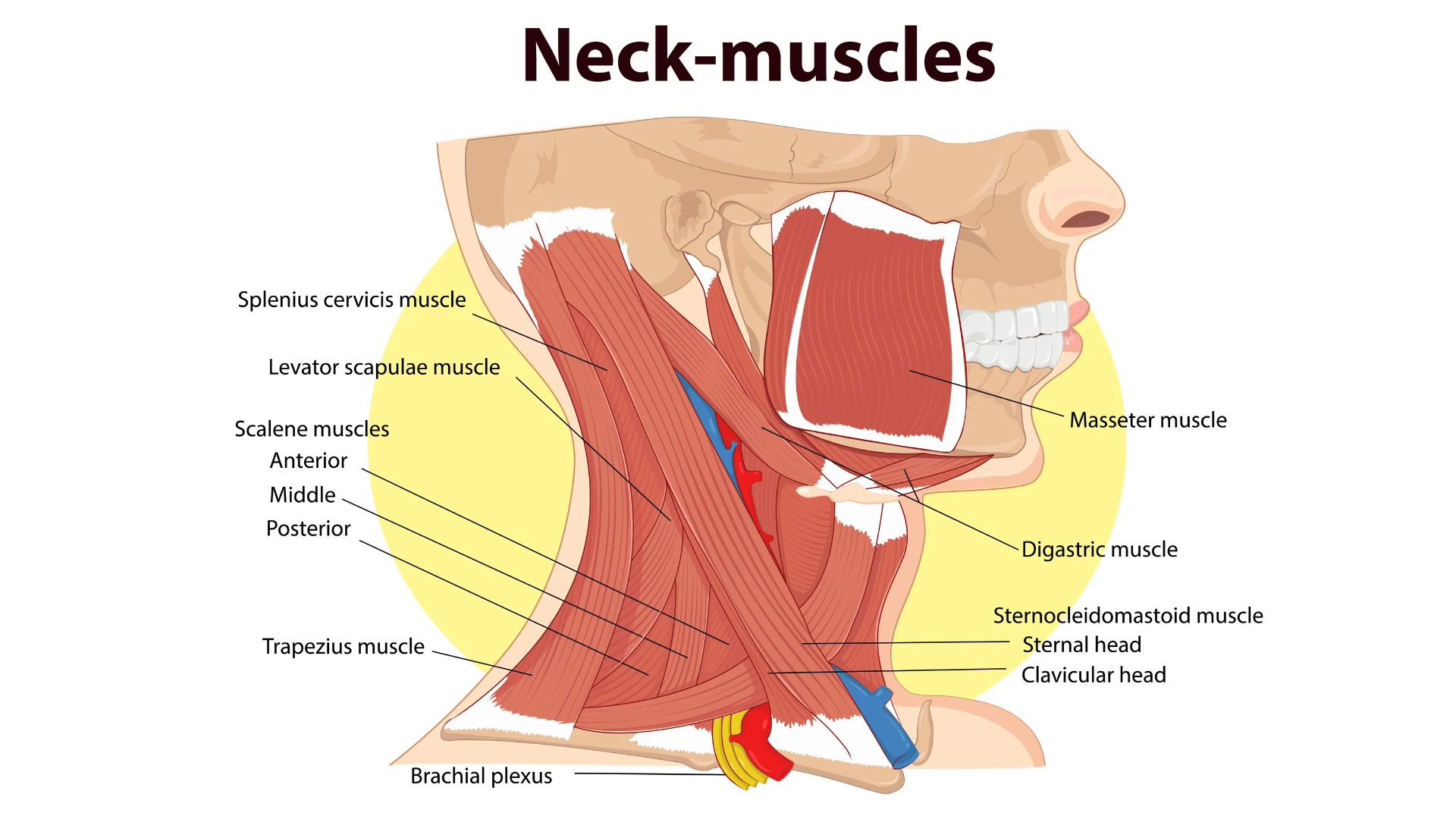
When we attempt to move our neck, these inner stabilizing muscles continue to work, but it’s the larger mobilizing muscles that help do the actual moving, like our sternocleidomastoid, scalenes, trapezius, and others.
How Healthy Is Your Neck? 5 ROM Indicators
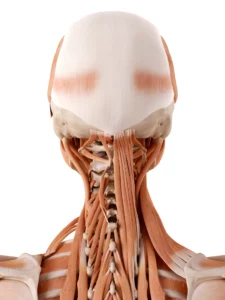 We achieve segmental mobility with healthy and strong inner scaffolding—one bone moving at a time. In flexion, we round one bone at a time. The same goes for extension, one bone at a time. In a side bend, we don’t see a collapse. And with rotation, well, imagine a spiral staircase.
We achieve segmental mobility with healthy and strong inner scaffolding—one bone moving at a time. In flexion, we round one bone at a time. The same goes for extension, one bone at a time. In a side bend, we don’t see a collapse. And with rotation, well, imagine a spiral staircase.
Ideally, we should be able to:
- Bring our chin to (almost) touch our chest in flexion.
- Look up to the ceiling or sky.
- Position our head parallel to the ground, and rotate 80 to 90 degrees to both sides with the chin still parallel.
- Perform lateral flexion or neck side bending about 20 to 45 degrees
- Move with fluidity, without pain or restriction.
What Does Limited Neck Movement Look Like?
Limited neck motion occurs when one or more segments are unable to move or are stuck to or on each other. This could be due to disease (osteoarthritis, degenerative disc), injury (whiplash), or habit (poor posture, shallow breath, chronic stress, lack of core or shoulder strength, lack of mobility in our shoulders and rest of spine). When we have limited motion, it could affect us in all movement directions or just one or two.
Finding Relief for Neck Pain: Avoid These 4 Common Mistakes
Mistake #1. Neck Pain and Persistent Stress- Don’t forget to Breathe!
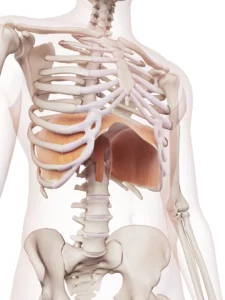 The presence of chronic stress can directly affect how your neck feels and functions. How so? The body’s response to stress is the same as its response to fear or threat, like being chased by a bear, but that bear is now deadlines, relationship stress, etc. The response is fight, flight, or freeze. The autonomic nervous system turns on and sends signals to many of the body systems to prepare to fight, flee or lock up. Two of these systems can directly (and adversely) affect our necks: musculoskeletal and respiratory.
The presence of chronic stress can directly affect how your neck feels and functions. How so? The body’s response to stress is the same as its response to fear or threat, like being chased by a bear, but that bear is now deadlines, relationship stress, etc. The response is fight, flight, or freeze. The autonomic nervous system turns on and sends signals to many of the body systems to prepare to fight, flee or lock up. Two of these systems can directly (and adversely) affect our necks: musculoskeletal and respiratory.
Musculoskeletal: In fight, flight, or freeze, muscles prepare by tensing up—big time. Neck muscle tension increases significantly. This tension in and around the neck muscles causes the neck to stiffen, making it harder to operate with natural fluidity. Over time, this results in pain.
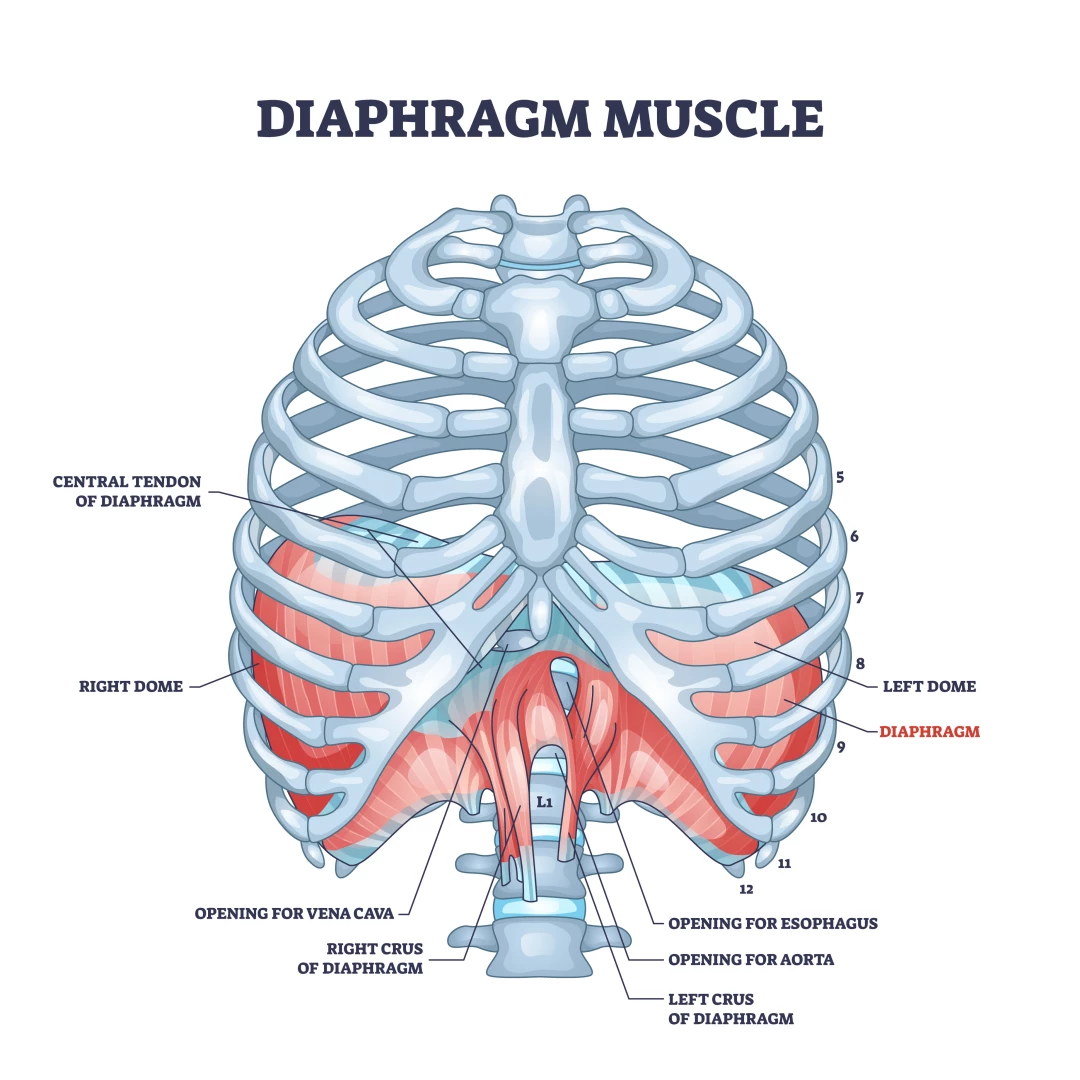 Respiratory: In the fight, flight, or freeze, our breath becomes shallow. In turn, this shallow breathing limits the capacity of our diaphragm to breathe and makes for increased use/hijacking of neck muscles. This recruitment of neck muscles also happens when we habitually sit slumped or don’t use our diaphragm when breathing.
Respiratory: In the fight, flight, or freeze, our breath becomes shallow. In turn, this shallow breathing limits the capacity of our diaphragm to breathe and makes for increased use/hijacking of neck muscles. This recruitment of neck muscles also happens when we habitually sit slumped or don’t use our diaphragm when breathing.
When the diaphragm contracts, it moves downward, creating a vacuum in our lungs to let the air rush in naturally and automatically. That’s how we inhale and get fresh oxygen. If we aren’t able to move that diaphragm down (due to fight, flight, freeze, posture, or habit), we still need to create that vacuum effect in the lungs to breathe air in. We then resort to another, much less efficient way by having the neck muscles “lift” the collarbones and top ribs with each inhale. Neck muscles now have to work hard with every breath, causing neck tension, poor tone, stiffness, and eventual pain.
Mistake #2. Pulling Your Shoulders Down
Always pull your shoulders down. Have you been told to pull your shoulders down and back and stand up straight? Well, that posture isn’t all it’s cracked up to be. The ideal position for our shoulder blades isn’t down and back. Rather, it’s a floaty position midway between a full shrug and a full pulldown.
By finding this midpoint, we allow the trapezius and levator scapula (the muscles that connect from the scapula to the neck) to be at rest and lengthened. We don’t want our scapulae to be pulled down because the traps and levator scapulae muscles are then held too long and grow achy. Plain and simple, it’s a poor posture to sustain for the long haul.
Watch this video to learn how to position your shoulders and neck for decreased tension.
Mistake #3. Sustained Eye Strain can hurt your neck too
Tunnel vision happens when we stare at a screen all day or are stressed (another physiological response to the autonomic nervous system’s fight, flight, or freeze). Through fascia and connective tissue, the eye muscles are attached to the muscles in our suboccipital region (just below the base of the skull/in the top back part of the neck).
Sustained eye strain often creates tension with these suboccipital muscles.
Mistake #4. The 40-Pound Head: Why Forward Head Posture Leads to Neck Pain
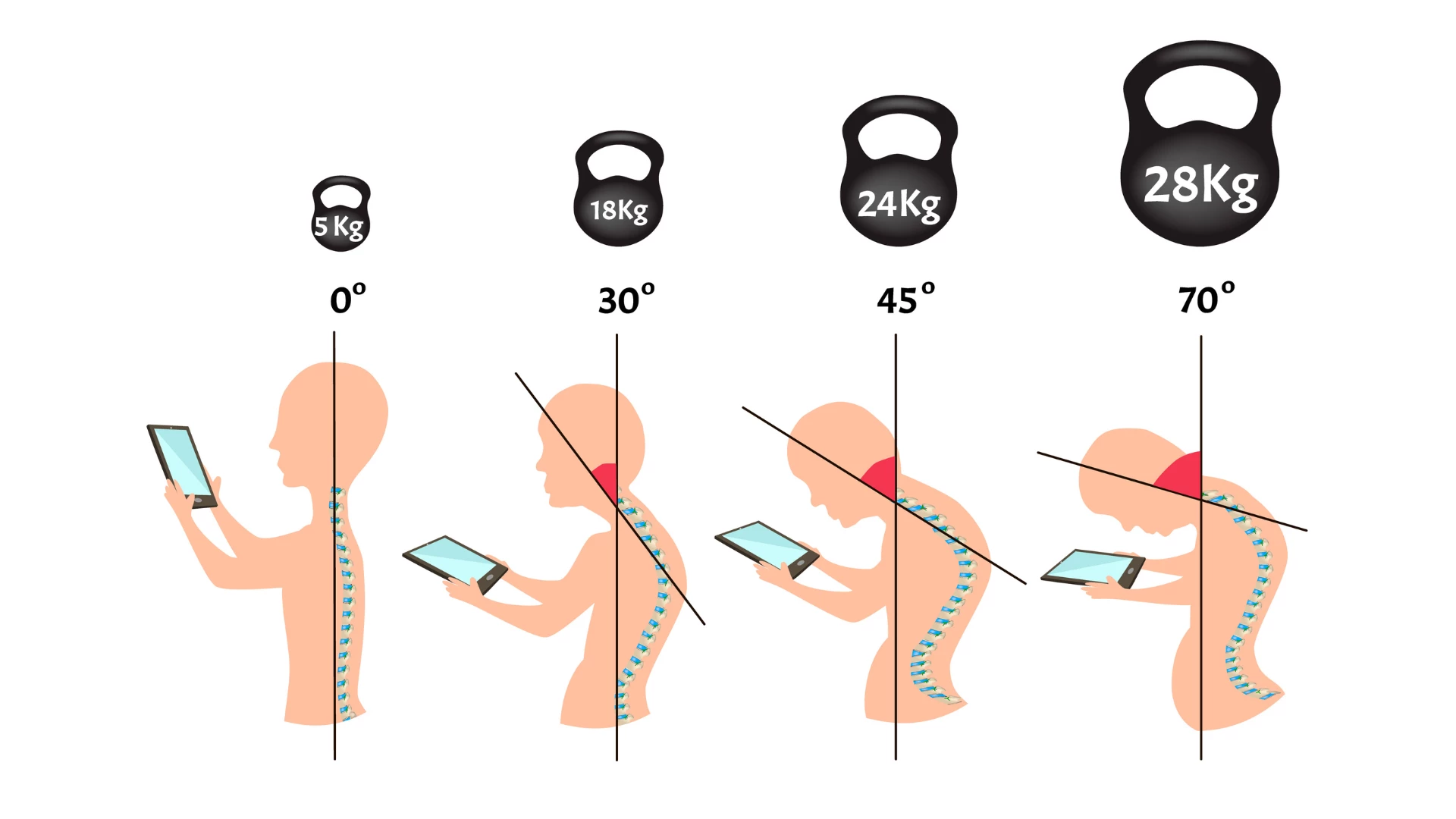 And lastly, you’ve heard it before, but it bears repeating: forward head posture often leads to some pretty big (read: drastic) changes in how we move our neck and how our inner scaffolding works, or, as the case may be, doesn’t work. Avoid this as often as you can (when reading, looking at your phone, or working in a forward posture) in order to keep your neck movement strong and healthy.
And lastly, you’ve heard it before, but it bears repeating: forward head posture often leads to some pretty big (read: drastic) changes in how we move our neck and how our inner scaffolding works, or, as the case may be, doesn’t work. Avoid this as often as you can (when reading, looking at your phone, or working in a forward posture) in order to keep your neck movement strong and healthy.
Watch this video to learn more about how forward head posture impacts our neck motion.
A Recap: What Leads to Neck Pain and What to Avoid
Remember: repetitive motions, strenuous activities, and poor posture can all lead to muscle injuries that cause pain when you turn your neck. Not only can neck pain disrupt your daily activities, but it can also leave you incapacitated if it travels to nearby areas.
Also, read...
3 Ways to Counteract Text Neck with Yoga
4 Keys to Relieving Back Pain with Therapeutic Yoga
SI Joint Reset: Legs-Up-the-Wall Pose
Related courses
Bodymind Ballwork: Myofascial Release for Lifelong Flexibility
Keys to Finding Inner Strength: A Yogic Wisdom Path to Developing Greater Resilience
Somatic Yoga for Fascial Unwinding

Diana Zotos Florio is a physical therapist, yoga teacher, certified strength and conditioning specialist, mother of three, and the cofounder of Threes Physiyoga Method. A constant mover, she loves all forms of exercise and considers movement to truly be medicine.
Prior to founding TPM, Diana spent seven years working as a physical therapist at the Hospital for Special Surgery treating anyone from inpatient joint replacement patients to professional marathon runners. She’s been practicing yoga for over 20 years and has always treated her patients through the lens of yoga. Diana completed yoga teacher training at OM Yoga in NYC in 2010.


